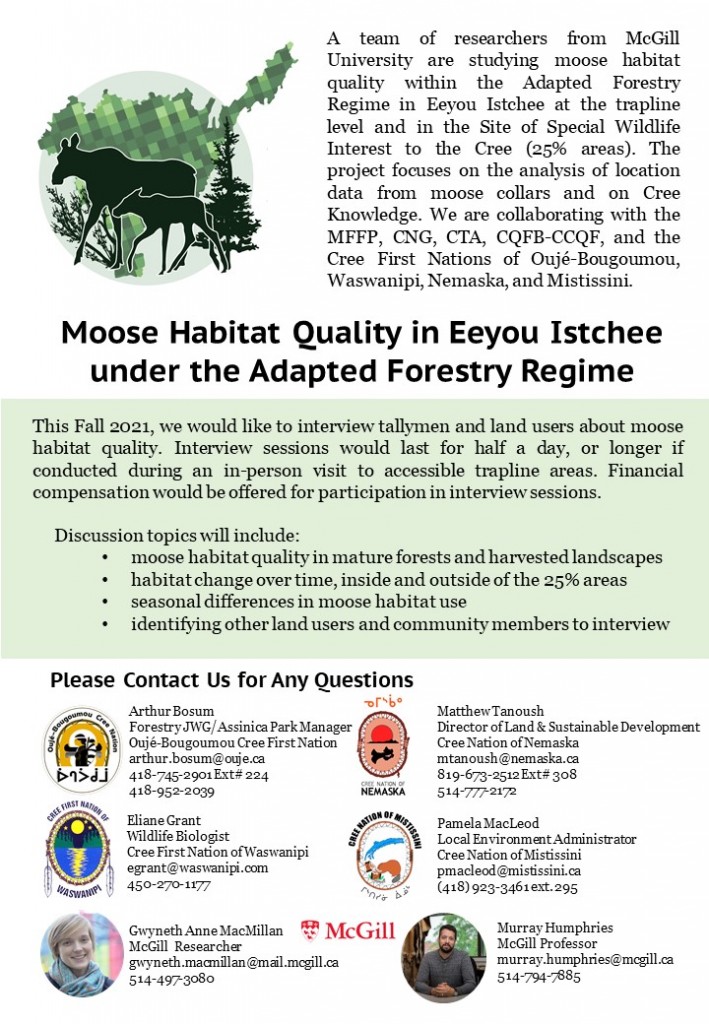| Moose Habitat Quality
in Eeyou Istchee under the Adapted Forestry Regime (MHQ-EI-AFR) |
 |
Context
In 2017, after many trappers expressed their concerns about the extent of forest exploitation in their areas of wildlife interest (commonly known as the 25%), the Cree Trappers Association (CTA) brought to the CQFB’s attention a resolution taken by its members. This resolution focused on the need to carry out a wildlife habitat quality assessment on the territory of the Agreement, after 15 years of the Paix des Braves’ provisions application.
In accordance with its mandate to monitor the implementation of Paix des Braves, the Board decided to initiate a project to assess the quality of wildlife habitats in the territory of the Agreement. The general objective of the project is to evaluate the effectiveness of the Adapted Forest Regime’s provisions to maintain or improve the habitat of important wildlife species in the territory of Eeyou Istchee.
The project was developed in several phases, the first of which was to test the analytical framework of the evaluation. It was decided that the project would target, in particular, moose habitat in the 25% areas, but the long-term goal would be to monitor habitat quality for each species of interest to the Crees.
The results of phase I made it possible to validate a methodology used to collect and compare the assessment made using tallymen’s traditional knowledge with the results obtained from the existing habitat suitability index.
As it moved to phase II of the project, the Board realized that several initiatives were underway concerning moose habitat quality and populations in Eeyou-Istchee. Discussions were therefore undertaken in order to evaluate the synergies between the different projects.
Project
This is how the CQFB joined, as a partner, the McGill University on a larger study related to moose habitat in Eeyou-Istchee by incorporating its initial goals, which are to assess the Adapted Forest Regime’s effects on moose habitat quality at the trapline level as well as in areas of wildlife interest. The Moose Habitat Quality in Eeyou-Istchee under the Adapted Forestry Regime (MHQ-EI-AFR) project seeks to integrate Cree knowledge to a scientific approach. More specifically the project objectives are:
- To evaluate moose habitat quality within the Adapted Forestry Regime territory in Eeyou-Istchee at the trapline level and at the level of the Sites of Special Wildlife Interest to the Cree.
- To evaluate moose habitat quality north of the commercial forestry zone in Eeyou-Istchee under natural disturbance regimes.
- To develop a moose Habitat Suitability Index (HSI) model for northern Quebec’s western black spruce – feather moss forest ecozone.
Other instances such as the Ministère de la Forêt, de la Faune et des Parcs (MFFP), the Cree Nation Government (CNG), the Cree Trappers Association (CTA) as well as the Cree First Nation of Waswanipi, Oujé-Bougoumou, Mistissini and Nemaska are also collaborating partners in the MHQ-EI-AFR project.
